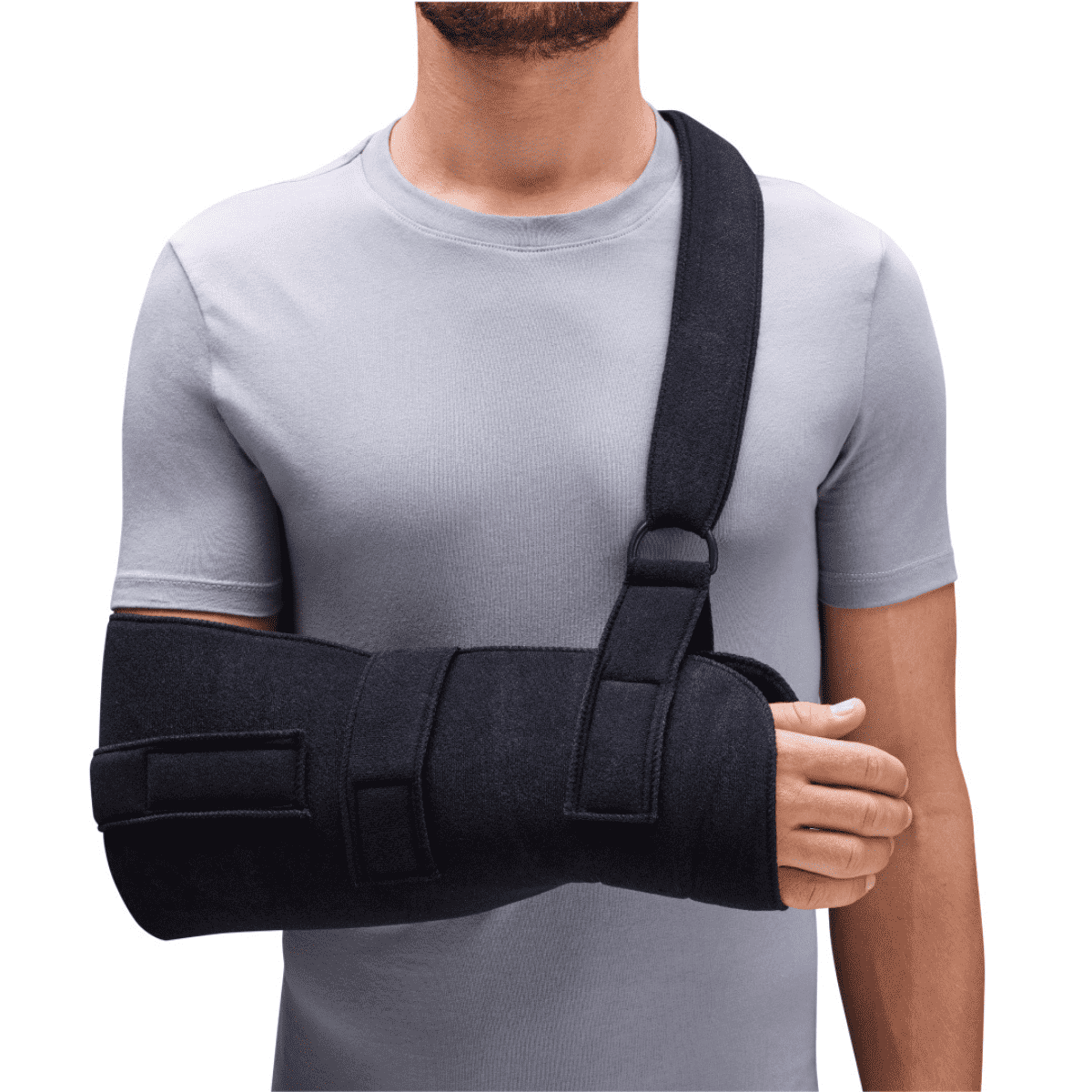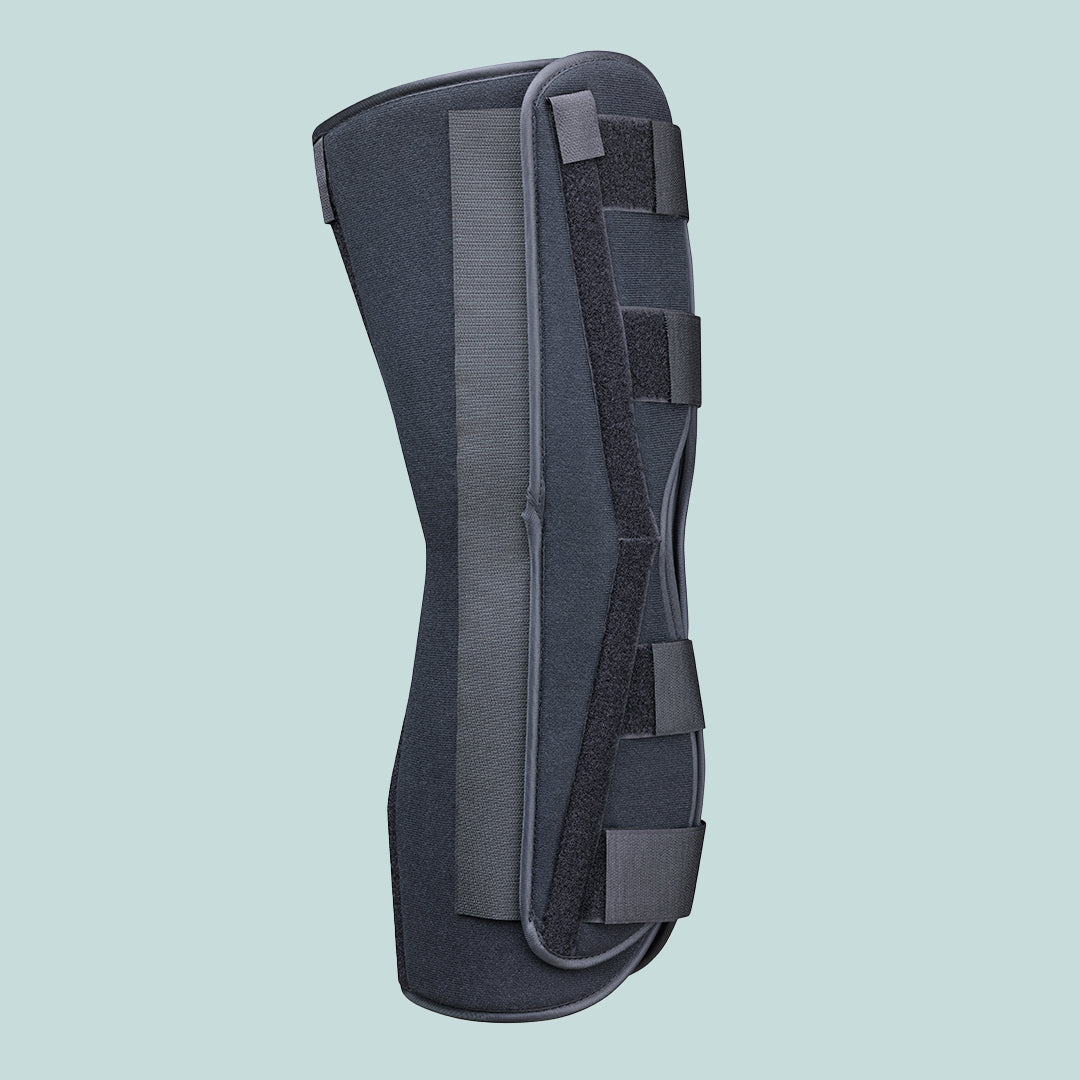Looking for a knee ligament injury brace and aren’t sure where to start? Here’s our guide to picking out the best one for you!
Key facts about knee ligament injuries
You can injure one or more of the knee’s major ligaments. These include:
- Anterior Cruciate Ligament (ACL): front of the knee
- Posterior Cruciate Ligament (PCL): back of the knee
- Medial Collateral Ligament (MCL): inner side of the knee
- Lateral Collateral Ligament (LCL): outer side of the knee
Causes: The ligaments stabilise the knee and stop the tibia and femur from sliding too far apart. They can tear if something forces these bones apart, like twisting your knee too fast in skiing or getting tackled in footy.
Symptoms: Knee ligament injuries result in pain, instability, swelling, and sometimes a popping sensation.
Grades: These symptoms will vary in severity depending on whether you have a mild sprain (grade I), partial tear (grade II), or complete rupture (grade III).
Best knee braces for ligament injuries
b:joynz Knee Support
The b:joynz Knee Support is best for grade 1 sprains (i.e., where you’ve overstretched or microscopically torn the tissue). The brace will provide stability, support, improved blood flow, and pain relief as you heal. It does so through compression knit and a gel pad, which work together to reduce swelling and improve your muscle function and control.
b:joynz Knee Brace Pro
The b:joynz Knee Brace Pro is suitable for grade 2 tears. Its splint and strap system stabilises the knee. Meanwhile, the ROM hinge restricts flexion and extension in 15-degree intervals, essential for preventing the frayed ligament ends from splitting further. The brace also has a wrap-around design, so you won’t need to bend or extend the knee to slip it on.
b:joynz Knee Brace ROM
The Knee Brace ROM is best for grade 2 and 3 tears. Like the Knee Brace Pro, it incorporates straps, stays, and a range of motion restrictor. The difference is that the ROM allows for more precise restriction (10 degrees), and the brace has padded cuffs for a more open design.
Is a knee brace all you’ll need?
Braces can help knee ligament injuries heal, but depending on your doctor's recommendation, you may need extra assistance.
- Some grade 2 and 3 ligament tears may require reconstruction surgery
- You may need to see a physiotherapist or osteopath to work on your knee mobility, strength, and function.
- Rehabilitation exercises are essential. Your clinician can give you a plan to maintain knee strength and function as you heal (and prevent future injuries).
- It’s crucial to RICE (Rest, Ice, Compression, Elevation) and get diagnosed at the first signs of injury. RICEing will kickstart the healing process, and a professional diagnosis will let you know precisely what you’re dealing with, what to do about it, and how long recovery will take.
Best brace for knee ligament injuries: the takeaway
A knee brace is essential for knee ligament injury recovery. It will stabilise and support the joint, reduce swelling, and relieve pain. Depending on your injury severity, you may need a soft, rigid, or semi-rigid brace. And to ensure a good recovery, follow your doctor’s advice on medication, exercise, and treatment.



















